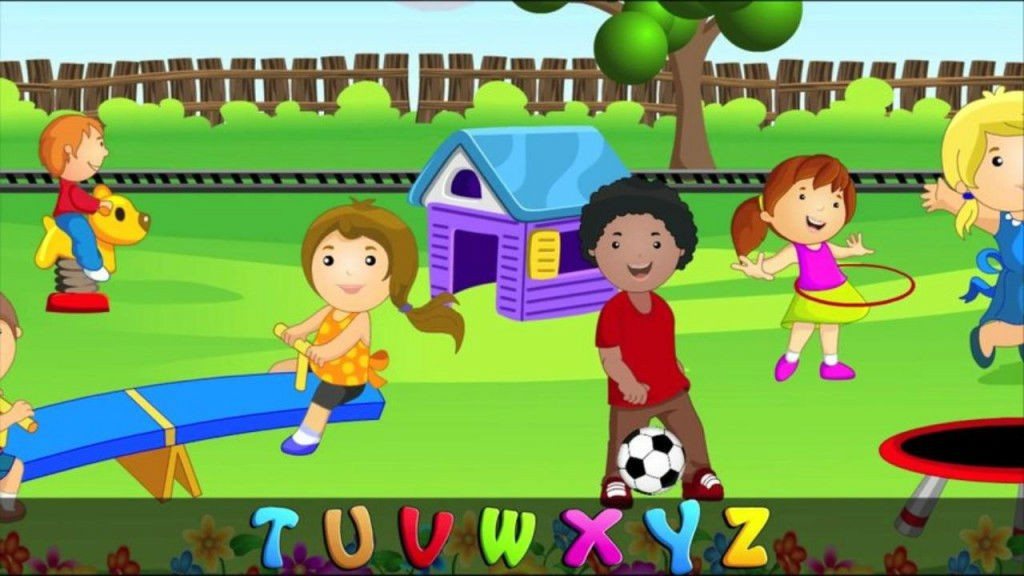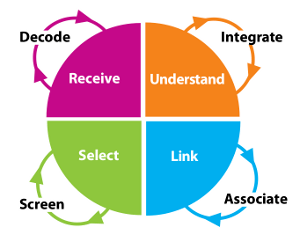Welcome To The New Genre Of Learning
We first stumbled upon the English alphabets nursery rhyme videos (video-based learning for preschoolers) on YouTube when we started deliberating on some preeminent ways to teach our preschool child the English alphabets. My instructional design professional milieu provided me an opportunity to appraise these videos more deeply as a cognitive alternative to the contemporary book-based learning approach. The videos offered a valiant alternative to the reclining and somewhat boring conventional approach, and were an instant hit with my three-year old. The next few months, we basked in the ecstasy of his buoyant and chirpy voice resonating the alphabet rhymes all around the house! Needless to say, the objective of teaching the English alphabets was edaciously achieved without much ado from our end.
While video-based learning may not be a new phenomenon, it has recently started gaining momentous and accentuated pitch and resolution in the learning and development domain. What makes it increasingly trendy is its ardent approach of blending instructional strategy with the assorted range of technology and delivery options. The change in the trend of electronic learning resources that peeks out today is the fact that customized animations and videos, which were earlier only a part of the entire package bundle of the electronic learning resources, are now being beheld as one of the independent packaged bundles in themselves. This change in the trend is largely been nurtured on account of two primary developments in the educational technology domain: first the increased cogency of social media proliferation and social blogging in the everyday life of a learner, and second, the advent of smart phones and the increased verity of mobile learning.
Reasons for Eminence
So, what makes video-based learning so eminent? Anna Pitts, an online researcher at the Graduate Recruitment Bureau, remarks:
“Studies have shown that we rely heavily on our senses to process information when learning and engaging more than one sense when teaching can help information processing. Using multiple senses allows more cognitive connections and associations to be made with a concept.”
Video-based learning has the ability to comprehend to different learning styles seamlessly. Videos in general easily cater to the visual and auditory learning styles almost immaculately and simultaneously, and offer an exceptional combination to engage the two prominent senses of the learners, visual and auditory. So do most of the conventional page-turner online modules with text and audio.
What differentiates video-based learning is its ability to not just engage, but galvanize the cognitive schema of the learner better and faster. Contrary to the conventional page turners, in video-based learning, the schema of the learner is compelled to work faster due to the high frequency of changing onscreen sensory ambiance blended with the meticulous auditory permutation. It’s an open secret that faster working schema revitalizes learning, and in essence, video-based learning resources find a replenished zenith in terms of learning and retention.
Madhury Dubey, author of “Effective E-learning: Design, Development and Delivery”, cites that this ubiquitous eminence of video-based learning is also driven by the striking shift of learners from content consumers to content creators. One key factor that has contributed to the increasing popularity of video-based learning is that videos act as an impeccable channel, a single source to deliver learning both synchronously and asynchronously. With a plethora of mobile learning applications, such as Explain Everything, available across different mobile platforms (both android and iOS), video-based learning has struck an unprecedented cord with teachers/trainers as well as mobile learners.
Some other reasons for this fervent proliferation of video-based learning include:
- Ease of rapid development and deployment across multiple platforms and devices.
With all the advancements in educational technology today, we have a plethora of options to make the video-based modules device and platform independent. - Coherence with subject matters of almost all dimensions and depths.
In addition to conceptual animations and recorded lectures, video-based learning modules are considered best for highly technical and complex subjects such as engineering, surgery, military academia, and even flight training. - Assurance of a face-to-face human texture.
Salman Khan, the founder of Khan Academy, remarked that when he started creating and posting math tutorials on YouTube for his cousins, they preferred him on YouTube over him in person.
The Right Instructional Strategy Mix
Not all videos may have the stamina and fortitude required to make the learning experience congruent enough to achieve the desired learning objectives seamlessly. Without meeting this end, a video discourse may well be stripped off the real objective and run the risk of being diluted and adulterated to a mere storyline. Similar to any course/learning discourse, video-based learning objects must also imbibe and weave the right kind of instructional mix to enable a long-term learning roadmap and high-end retention. A creative pursuit of blending the joy and surprise emotions of the viewers/learners is an essential mix to gain the attention of the learners in any video discourse; this being more demanding compared to conventional page turners. Given that videos essentially may lack the frequent interactive elements (although Khan Academy does provide inbuilt interactive elements in some of their video tutorials), holding the attention of the viewers/learners and keeping them involved becomes an ingrained challenge, which the instructional designer must address unconditionally throughout a video discourse.
Harvard Business Review claims that “People seem to have an unconscious aversion to being persuaded,” and this may inspire vital intellectual nourishment for the instructional designer creating any video-based discourse. That the risk of persuasion stands higher in a video discourse is evident from the fact that unlike conventional courses, any form of noise (visual, auditory, technical, or instructional) in videos is far more distracting. To put it simply, any degree of redundancy, superfluity, repetition, or information overload may result in persuasion and distraction, and the essence of learning being lost. As a corollary, the timeline of a video discourse must be consciously and instructionally plumped to pedantically encapsulate the subject matter and the learner needs.
To synopsize, video-based learning, carefully orchestrated and conflated with the apposite instructional strategy mix, now seems to be the new pitch and resolution of learning, at least for some time in future.
Our Nascent Experience
Working with the Educational Technology Center of one of our clients, a premier university in Kingdom of Saudi Arabia, our team recently developed a pilot series of video-based courses (VBC) on highly technical engineering subjects. The subject matter on these VBCs sprawled across the entire curriculum of some selected courses being taught in the university. Upon release, the VBCs became an instant hit with the students on the campus. Apart from other factors contributing to the grand success of this endeavor, the release time was of paramount importance. These VBCs were envisaged as supplements to the actual classroom lectures that the students were required to attend. The release date of the VBCs was positioned close to the semester exams, and the VBCs were expeditiously drawn as important revision resources for the students.
The other important aspect claiming the success of the VBCs was the punctilious selection of the subject matter experts – the best faculties of the university for the selected subjects. The students were able to connect with and acclaim the “face-to-face” persona of their favorite professors as the “lead actors” in the VBCs. What made the VBCs even more cogent and lucid was the prudently schematized instructional design in terms of chunking and aligning the VBCs with the entire curriculum. The duration and content relevance factors played equivocally, ensuring that adept and adequate practice sessions were included with each VBC, wherever required. Looking at the grand success of this pilot initiative, the university has now decided to embark on developing similar VBCs across the entire gamut of subjects and courses being taught there as their departments’ upcoming engagements.








